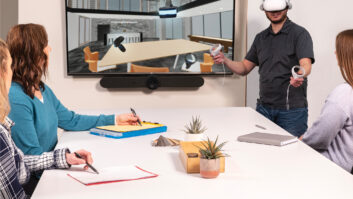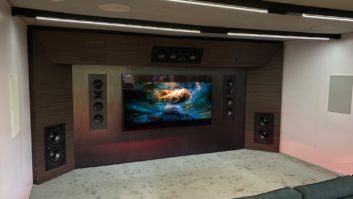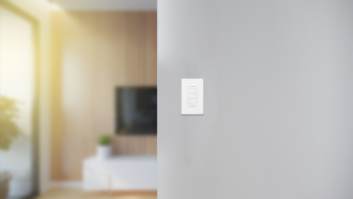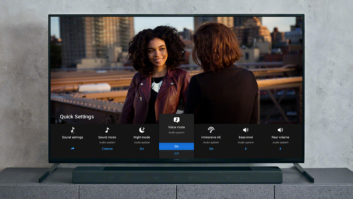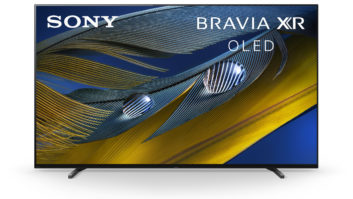As it has now been a while since the Electronic Entertainment Expo, known more popularly as E3, wrapped up in Los Angeles, the consumer and business press has had that time to chew over the top level announcements. Given that, you’d think that there would be nothing left to talk about, but for those of us who have to deal with installations more complex than the typical consumer’s “connect it to the TV or maybe to an AVR” there was, indeed, more to E3 than met the eye. After all, the devil is not only in the details, but it is also in remembering that what was not yet revealed is as important as what made a big splash at the show.

Sony’s new portable platform, called Vita, will be available globally before the end of 2011 at a price of $249 in the United States for the WiFi-only model and $299 for a model adding 3G mobile connectivity.
Toward that end, we may as well start with the most anticipated set of announcements at this year’s E3, Nintendo’s Wii U. This will be the first of the “next-generation” games that will be introduced stretched through the next 24 to even 36 months. Wii U will undoubtedly catch-up to Xbox 360 and PS3, adding games output at up to 1080p. It will do that through HDMI, with six-channel linear PCM for the audio. There has been no mention of the use of either of the Dolby or DTS lossey or lossless codecs, but at least there will now be both high-quality audio and video for Nintendo console games via standard HD-capable connections and formats.
The software load-in will be via a proprietary high-density, 12cm optical disc with the drive and system also compatible with current Wii discs. Those hoping for a Blu-ray drive will have to go back to PS3, which remains the only game system with that capability. There will, of course, be network connectivity, but as is the case with many aspects of Wii U, we need to wait to see if wireless networking will be included. Those thinking ahead to installations with Wii U are advised to simply make certain that another hard-wired network jack is available.
The fun here, as has been widely reported, will come from the controller. The new Wii U controller looks like a mid-sized tablet that has grown game control buttons. The 16:9 aspect ratio, 6.2-inch diagonal touchscreen display of unannounced resolution has all the familiar buttons and control pads along with a built-in accelerometer, gyroscope, rumble feature, camera, mic, stereo speakers, and a sensor strip with stylus for game control, drawing, and information entry.
Clearly, this type of control adds a new dimension to gaming. It will function as a controller, it will allow transfer of the game from the main display in the room to the controller alone, and it will even allow game play that involves both the main screen and the screen on the remote. A good example of that is to imagine placing the touchscreen controller on the floor, loading a golf game, and then using existing Wii remotes for the golf club swing. The ball tees up on the tablet, and you see it loft down the course on the main screen.
This example goes to another important part of the new controller: all existing Wii remotes, controllers, and accessories are compatible with the new Wii U. That, in turn, also means that you’ll need to continue to install the existing Wii Sensor Bar with the new console even as it was not yet disclosed what type of communication (probably RF) will be used between the new controller and the game.
Along with system, hardware, and software questions that are still open, there are two other important, unanswered questions at this time. The new system is very much un-priced, and other than a vague “2012,” there is no indication of the availability date.
New PS3 Games from Sony
Turning things around 180 degrees at E3, Sony introduced a new portable platform and new games for the existing PS3 system. Rumored for some time, the announcements at E3 detailed the name of the product as Vita. Vita will be available globally before the end of 2011 at a price of $249 in the United States for the WiFi-only model and $299 for a model adding 3G mobile connectivity. No pricing was announced for a carrier plan, but perhaps the best moment of Sony’s press conference was when it was revealed that the carrier for the United States will be AT&T. Sony was as emphatic that Vita is a portable game and not a phone as Nintendo was that the Wii U remote is not a tablet, and indeed, not even able to function outside of the same room as the Wii U console.
That said, the technical specs for Vita are impressive: a five-inch, 960 x 544 resolution OLED display with touchscreen capability, front and rear cameras with 120 fps frame rate at QVGA and 60 fps at VGA. There is on-board GPS (in the 3G/ WiFi model only), WiFi location support, stereo speakers, and a built-in mic. File play support is MP3, AAC, and WAVE for audio and MPEG-4, H.264, and MPEG-4 AVC for video. Bluetooth 2.1+EDR and A2DP supplements the 802.11 b/g/n wireless.
Curiously, one of the new product announcements from Sony at E3 that seemed to attract the most attention was not a game product at all, but something one might not expect to see previewed at the world’s premier event for the game community. Bursting on to the scene alongside Vita and new games for PS3 was the debut of a 24-inch, LED-illuminated 3D video monitor. Clearly designed to reinforce Sony’s commitment to 3D for all types of programming, the display is a true monitor with no internal tuner and does not include a remote. However, at a retail price of $499 with one pair of 3D glasses, a six-foot HDMI cable, and a copy of the forthcoming Resistance 3 game in 3D included in the product bundle it will be an interesting bargain when it comes to market in the fall.
One interesting feature of the product is that thanks to a unique take on the fast frame rate also needed for 3D, you have a choice of standard 3D for appropriate games or other 3D content, or, switching views with a button on top of the glasses, two players can have different views of the same game (in 2D). This takes the place of a split screen and definitely makes “first person shooter” and other games more interesting.

Nintendo’s new Wii U controller looks like a mid-sized tablet that has grown game control buttons. The 16:9 aspect ratio, 6.2-inch diagonal touchscreen display of unannounced resolution has all the familiar buttons and control pads along with a built-in accelerometer, gyroscope, rumble feature, camera, mic, stereo speakers, and a sensor strip with stylus for game control, drawing, and information entry.
Microsoft Builds Off of Kinect
While Nintendo previewed a new console and a unique new controller, and Sony showed its new portable, Microsoft showed neither a new console or a new portable game. More than anything, it was Kinect and the way it has been changing the face of games that was the focus of Microsoft’s presentations this year both in the press conference and on the E3 exhibit floor. A good example of that is the absence of “Guitar” games and the surge in “Dance” games. Clearly, the goals set out by Microsoft for a “controller-less controller” have been met.
Again, beyond the games, there was little in the way of hardware news for Xbox 360, although there was a taste of the future with demonstrations of a merger of the Bing search engine with Kinect to enable voice search and control to locate content available through Xbox 360 or associated content providers. This was not, as has been reported elsewhere, a full IPTV service, but rather a means to verbally tell the console what you want, have the system hear you, and then find what you’ve requested from the likes of Netflix, Hulu Plus, ESPN, and other music and video content from the Xbox LIVE Marketplace.
When it comes to programming, look for availability of YouTube and Ultimate Fighting Championship (UFC) content. Again, with voice control available as an option.
Noteworthy Accessories
Among the most interesting accessories at E3 were the DualMount and TriMount systems from dreamGEAR, which solve the perpetual problem of how to easily mount the motion controllers and the Wii Sensor Bar. Here, simplicity and ease of installation is the goal with a Wii bar and either the PS3 Eye or Kinect (in the two “Dual” versions) or all three items secured to a single device that either mounts directly to the wall or attaches to the top of a flat-screen display.
As is always the case at E3, there were a wide variety of third-party controllers, but the one that caught our eye as answering a true need was the forthcoming “Blu-Mote” remote from Snakebyte. Unlike other remotes from Sony and others for the PS3, this is not only compatible with the PS3’s Bluetooth commands, but it is also a full-function universal remote compatible with a wide range of IR-controlled home entertainment products and programmable for six devices. For products not in the unit’s internal code base, it has IR learning as well. A backlit LCD display has the curious capability for a remote of showing the time and room temperature, and unlike all such remotes other than Power A’s 3-in-1 PS3 remote, all the buttons are backlit. Particularly for the installation where the PS3 is used more often for Blu-ray playback in a home theater situation than for gaming, this should be a big hit when it is available this fall at a $49.99 MSRP.
As they always seem to do at E3, the folks at Nyko came up with something unique. Although it was too early for any of the accessory makers to show chargers and other related devices for either Vita or the new Wii U tablet remote, Nyko forged forward with something unique for Kinect.
Their new Zoom accessory, priced at $29.95, is a “play range reduction lens” that makes it possible to use the Kinect system in smaller rooms. It simply slips onto the front of the Kinect system and by widening the field of view, cuts the distance where players can stand and still be “seen” by the Kinect by about 40 percent. A good way to picture this is to think of being able to play two-person games at the distance now required for single play and to be able to use Kinect with single-player games at least two or three feet closer than is now possible.
Spending time at E3 is many things, but it is certainly never dull. This year’s event was definitely no exception to that rule. While many of the products and concepts shown are still three to perhaps six or more months out in the distance, they do prove that even in light of the attention given to games on smart phones and tablets, console gaming is very much holding its own as a part of the total entertainment experience.
Based in Sherman Oaks, CA, Michael Heiss ([email protected]) is a CEDIA Fellow and contributing editor to Residential Systems.

